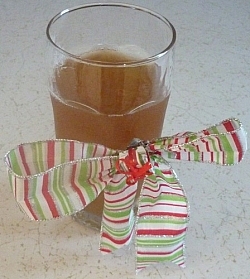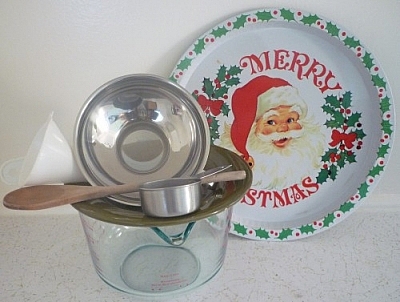I’m not much of one to equate the New Year with new beginnings, bummed as I get by snow and darkness, which is maybe the reason why half-hearted resolutions never work for me. This year, though, I feel like looking forward to the future’s opportunities is somehow more meaningful. Perhaps having entered the Age of Aquarius has already exerted an influence upon me. Tough to say with stuff like that.
Still, a week after the world came this close to ending (not like that fake Y2K scare we had last decade), I spent a day in the emergency room after watching Marc cough up blood a few times the night before. The thoughts swirling about my mind are now confused by the frenzy of holidays we celebrate. Somewhat like my niece, who on Christmas Eve was bursting with excitement because after Christmas comes Halloween, I find myself blurring subtle distinctions. I’m feeling closer to Thanksgiving than New Year’s. Even though I’ve got plenty to look forward to, I’ve got so much to be grateful for.
Primarily, that I’m not sick. Poor Marc! Bronchitis plus pleurisy equals mega pain.
But truly, that’s the first time he’s been sick in a long time. And I’ve fought off every pending cold that’s dared approach ever since I began drinking kombucha tea. I definitely think the strength of my immune system is due to this little miracle masquerading as an all-natural detox beverage — and to what I like to call immunitea. One cup of Canadian Shield by Boreal Forest Teas the moment my throat gets scratchy and all’s soon well again.

After over a year, I can attest to kombucha tea’s simultaneously detoxing and nourishing effects. And, no longer rookies, we’ve learned a few preparation tips along the way. Read Kombucha 101: Benefits and Preparation for detailed info; see Naturally Sweet Dreams for a bit of an update on flavouring kombucha tea; find new tricks and tools below.
Kombucha Tea Preparation Tips
For starters, we now boil three litres plus a cup of water and continue our recipe as usual. We do this because the recipe calls for removing one cup of starter liquid from the fermented tea, which is used for storing the unused scoby (kombucha culture). But then the one-gallon jar isn’t full! So, boiling an extra cup just keeps everything full and even.

We’ve also considerably lengthened our fermentation period, from five to eleven days. We find this is the perfect length of time to achieve effective yet pleasant acidity and carbonation. We then leave the prepared tea in the cupboard for longer than we used to, as it continues to carbonate. A batch can stay in the cupboard for about a month before it has to go in the fridge, where it can be kept for about another month. Not that it ever lasts that long around here!

SCOBYs can be stored up to six months in the fridge, a good thing since we have two babies a week now and we can’t possibly use them all. Once a SCOBY has been in use for about six months, it’s probably time to get rid of it.
Update: Learn why I was wrong about storing SCOBYs in the fridge by reading Kombucha Revisited: Correcting Misconceptions.
Babies grow thicker the longer the concoction ferments, so we no longer have to leave thin layers on mothers over two or three cycles. Each one is ready to peel off immediately. We’d rather it took them a little longer, though, since we simply can’t use all we have. So now we’re offering up our scobies for sale at $15 each (locally only for now, because we have no way to ship them, though that may change).
Update: I am now promoting buying one hundred percent organic SCOBYs from Kombucha Kamp, which are packed fresh upon order and grown in a controlled environment. I’ve learned a lot about the quality of the SCOBY used to brew kombucha tea, and trust me, it’s worth starting with the best! So if you’re looking to begin brewing your own kombucha tea, get your organically grown authentic kombucha starter cultures from Kombucha Kamp!
Kombucha Tea Preparation Tools
Lastly, we’ve learned that the right tools are important:
- A large measuring cup holding one to four litres is useful for measuring out the water to boil; otherwise, it takes forever with a smaller measuring cup!
- A wide mouth funnel placed over the strainer helps avoid spillage while transferring the tea from the pot to the glass jar.
- A wooden spoon is ideal for lifting the scoby out of the jar.
- Small measuring cups with handles help avoid spillage while transferring the kombucha tea from the glass jar to glass bottles — too many times we overflowed the funnel! It’s easier to pour once the jar is half empty.

Conclusion
We remain as dedicated as ever to kombucha tea, now each taking two cups every morning (poor Marc can’t stomach anything right now, though). We make two batches per week just to keep up with ourselves. Someone told me the idea for mass-produced and -marketed kombucha tea was pitched on Dragon’s Den. I’m happy it’s gaining popularity, and while it might sometimes be nice to have the convenience of just buying it somewhere, making our own is fun, easy, and cheap.

And, it’s great to be able to provide such a healthy beverage to family and friends. Having checked our prices against a few retail products currently on the market (online and at organic/natural foods retail locations), we’re definitely offering a bargain! Bottles are five dollars for seven hundred and fifty millilitres or ten dollars for one and a half litres. Contact me to get yours!
Update: You can now buy commercially-brewed bottles of kombucha tea from Eat Local Sudbury.
Thankful for my health and the ability to maintain it, I’m now welcoming the inspiration of the New Year and the new age to bring health and balance to other aspects of my life. And it’s a bright, sunny day — perfect for snowshoeing with the dogs (smiley face). Alas, we shall be lacking one biped on this excursion…




Search Niackery
×